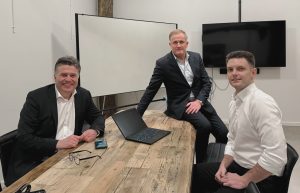
Unshackling the CFO From a Legacy
The airline industry has experienced unparallel turmoil this year. They are not alone. In fact, “Brace! Brace! Brace!” is what many CFOs may have heard at the onset of the crisis. To their credit, CFOs across every sector buckled in. They balanced employee health risks with commercial imperatives. They addressed supply disruptions, eased AR and AP pressures, and reset investor expectations — all while managing liquidity and conserving cash.
The crisis also highlighted the limitations with using legacy planning approaches. Now, with companies readying for the new normal, CFOs need a fresh approach and be able to disconnect from the past.

Reinventing for dynamic forecasting
Airplanes can withstand turbulence because their hulls absorb and distribute the stress. CFOs understand the same need for flexibility in business. They have weathered supply chain disruptions. They have reduced fixed costs, changed leasing arrangements, and provided financing measures as lifelines for high-grade suppliers suffering a catastrophic reduction in cash flow.
Now, CFOs must go further with dynamic forecasting. It provides CFOs the line of sight to maximize top-line and limit discretionary spending, which is something an annual budget cannot achieve. This allows CFOs to stay laser-focused on triggers and initiatives that account for most of their business value.
For dynamic forecasting to work effectively, CFOs need a scenario and modeling platform that supports real-time data updates. It combines financial data, customer, and sales data with operational data at scale. It must be easy for teams to adjust inputs when market conditions change and stress-test forecasts using predictive analytics.

Planning multiple business routes
When a crisis strikes, pilots disengage autopilot. CFOs had to do this at the start of the crisis.
Instead of only tracking to an outdated budget, driver-based scenario forecasts become a primary tool. However, these models were often hastily created with high-level assumptions. To ensure sustainable resilience, scenario planning capabilities need to be industrialized and embedded within daily business and planning activities.
This empowers business leaders and line managers to quickly adjust simulations that fully capture the operational implications. CFOs can run granular best and worst-case scenarios for specific regions or customers or sectors using predictive forecasting. This adds an empirical baseline alongside the optimistic input from line managers. When market conditions turn south, CFOs can plan a controlled emergency landing or conduct contingent resourcing to circumvent problems.

Looking past the legacy dashboard
Pilots are not alone when flying. They create situational awareness by conversing with different control towers and using other information sources that complement their dashboard. CFOs must do the same. And they did, during the first weeks of the crisis. By creating spending control towers and cash “war rooms” they took control by reducing inventory, refinancing outstanding credit, and easing accounts receivable and payable pressure. To navigate potential business disruptions, CFOs need to go beyond their dashboard of historic performance and enable real-time collaboration.
Awareness requires understanding how each component of your business model responds to multiple scenarios and monitoring those drivers constantly. The power to directly incorporate input from broad stakeholders in real-time helps companies adapt at scale.
Here, machine learning and AI can increase speed, depth, and accuracy of plans. For example, CFO can collaborate across lines of business to understand the liquidity and solvency risks. They can examine if their organization is ready to make acquisitions or new industry plays to offset structural risk.

Conclusion
The future is uncertain. No one knows which of the many scenarios on how recession and recovery will play out. However it lands, the unprecedented measures resulting from the crisis have short-circuited many financial models and plans that were running on autopilot.
A financial business modeling solution that supports real-time data, collaboration and analytics help unshackle the CFO from the past. This strengthens business agility and resilience, and help companies ride the recovery tailwinds that will eventually come.









